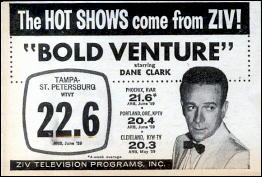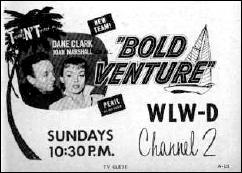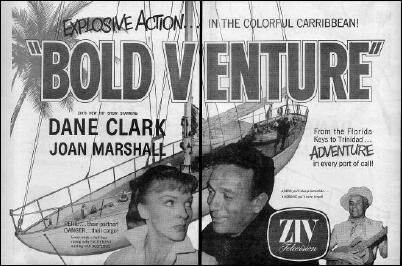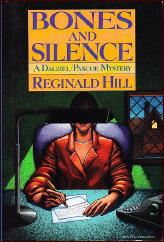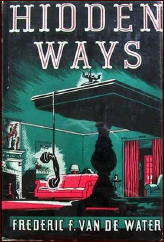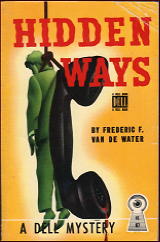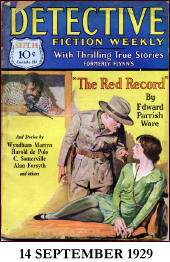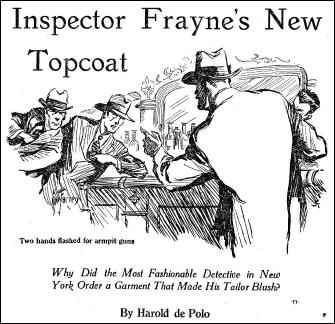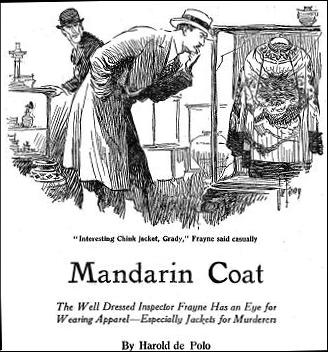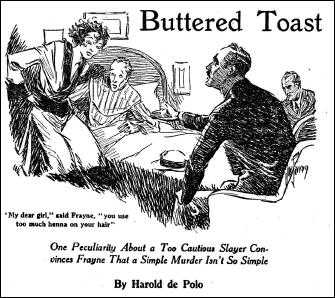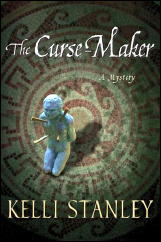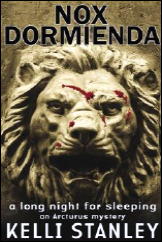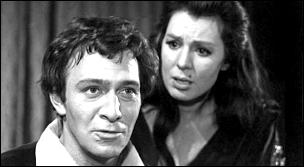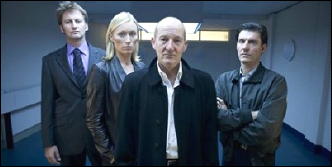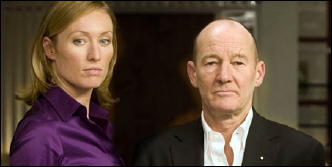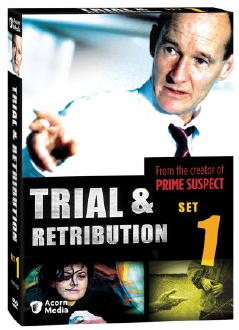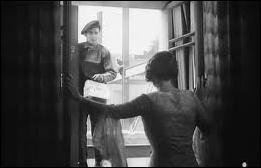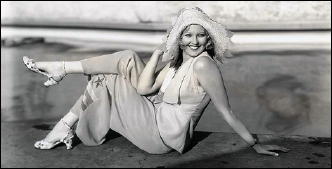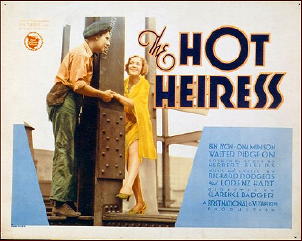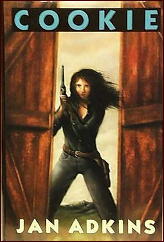Mon 20 Feb 2012
KRIS NERI – Dem Bones’ Revenge. Worldwide, paperback reprint, August 2003. Hardcover edition: Rainbow Books, 2000.
Humor is a funny thing. I can’t believe I really said that, but it’s true. Take this book for example. Mystery novelist Tracy Eaton and her totally dysfunctional entourage of family and friends are wacky beyond belief, with wise quips and comical situations coming non-stop and never-ending.
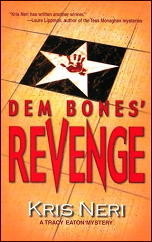
Sitcom stuff and awfully silly, but you’re thinking that you need examples. Here goes, and remember, you asked. Tracy’s mother (and former Hollywood movie queen) has just been arrested in connection with the murder of the plaintiff in a plagiarism suit that Tracy’s straitlaced lawyer husband Drew is defending. From page 18:
He pursed his lips in consideration, but lacking the thirty-four car-lengths Drew requires for safety, he scarcely budged. I wanted to belt him.
Clueless, he glanced my way and asked, “You’re upset about your mother, aren’t you?”
“Don’t be silly,” I snapped. “Why would you say that?”
“You always criticize my driving when you’re worried.”
That couldn’t be true. I wasn’t worried, not really. Drew just drove like my Aunt Fanny — and she’d spent the last five years in a coma.
Still, it wasn’t like Mother to cry uncle. That woman can talk her way out of a bear trap. And nobody could seriously consider her as a murder suspect. While she prided herself on breaking most of life’s rules, she’d never included the one that forbids bumping off cute old guys who file bogus lawsuits.
Between a contractor’s handyman who specializes in knocking holes in walls; Drew’s uncle Philly, a kindly old con-man whose short visit seems have lengthened into a lifetime stay; and an editor who thinks Tracy’s most recent novel needs massive changes, and in only two days time — not to mention her mother — Tracy’s life is filled to the brim.
And continuing on from the excerpt above, L.A. is definitely a land in which to drive (or not). From page 19:
From page 60: I twisted the wheel into another U-turn, this time not in a traffic break. Well, that’s why cars have brakes — those drivers leaning on their horns should thank me for testing theirs.
From page 61: I drove home in a daze. A menace behind the wheel, stopping at green lights, running reds, like I’d never read the DMV manual. Come to think of it, I probably never had.
You see what I mean. I happen to think it’s forced, but it is funny. But I couldn’t get much past Chapter Ten, and I’m going to tell you about it. Tracy has (um) traced her mother, who has mysteriously disappeared, to an isolated warehouse. Poking her head inside, she’s clobbered over the same, and the next thing she knows, she’s locked in a room with her mother, both of them prisoners.
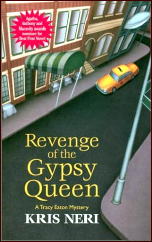
A room with a small pot for necessary purposes, and a slot in the door for food to be shoved in. And as it happens, a small locked storage chest. Tracy happens to still have her keys, and one of them just happens to be able to open the chest, which happens to contain long ropes, which happen to be long enough to reach the overhead skylight, which happens to be open, and Tracy’s mother happens to have been in enough western movies to lasso the latch, and Tracy happens to have included rope-climbing in her gym classes, and (as it happens), they’re free again.
Now. Does Tracy happen (sorry) to ask her mother what she was doing there? No. Does she inquire as to who it was that kidnapped them and was shooting at them as they made their getaway (disguised as prostitutes, so that a passing cop car might stop and give them a lift)? No. Does Drew’s Uncle Philly, who saw Tracy’s mother being captured in the first place, mention it to anyone? No. On page 118, he finally admits: “I froze, kid. I left her there.”
Tracy reflects on this (page 119): Even if it was my mother he threw to the wolves, I couldn’t blame him. We are what we are.
That was it. Except for skimming, this is as far as I went, even though it appears I’m in a minority here. Neri’s previous book in the series, Revenge of the Gypsy Queen, was nominated for the Agatha, Anthony, and Macavity awards.
Mystery writers Laura Lippman, Parnell Hall and Meg Chittendon have words of praise on the cover of this. At the present moment, there are eight reviews of this book on Amazon, and in terms of stars, all eight give it five out of five.
I don’t give stars any more, but if I did, the best I could do is one and a half. We are what we are, and what I am is puzzled. If not dumbfounded.
The Tracy Eaton series —
1. Revenge of the Gypsy Queen (1999)
2. Dem Bones’ Revenge (2000)
3. Revenge for Old Times’ Sake (2010)
[UPDATE] 02-20-12. I read this through just now before posting it for the first time since I wrote it, and I’ve come to the following possible conclusions, not mutually exclusive: (a) I was not having a good day, (b) I was not one of the intended readers for the book, (c) I didn’t know what I was talking about, or (d) humor really is a funny thing.
